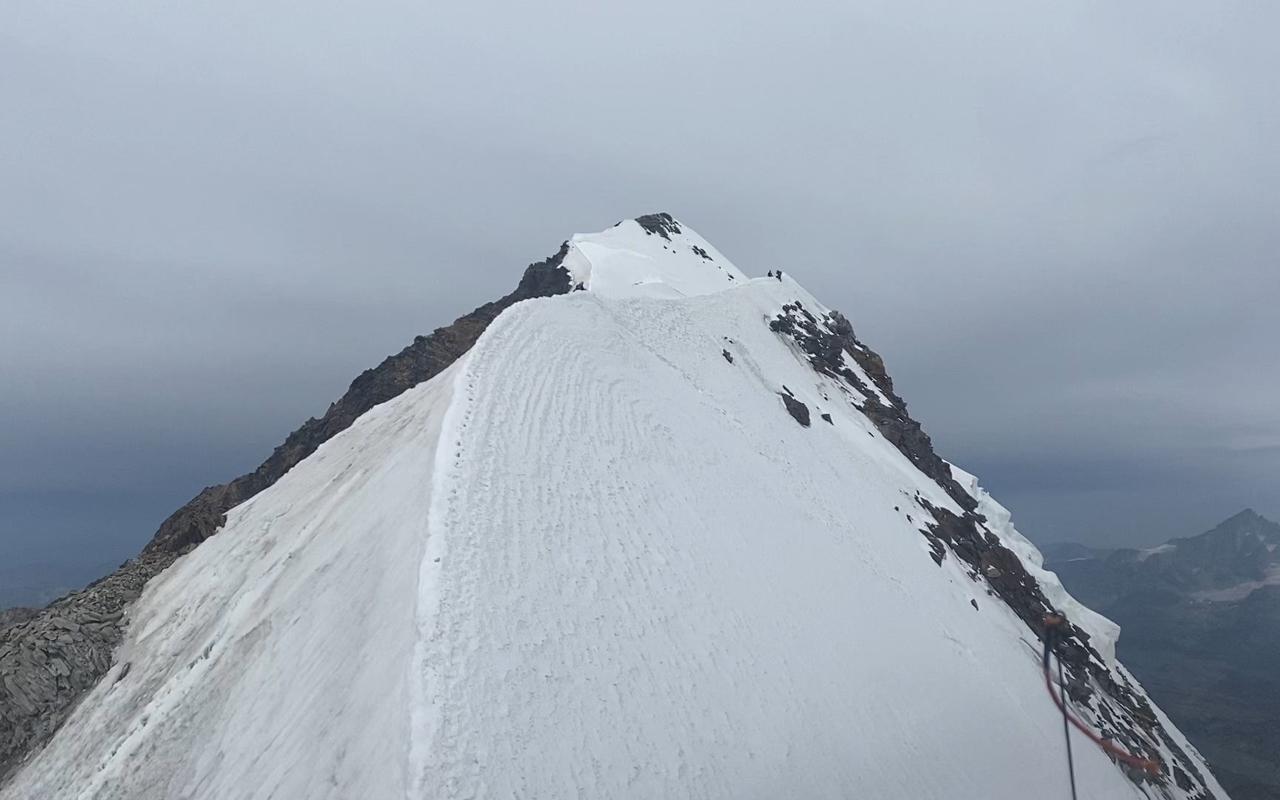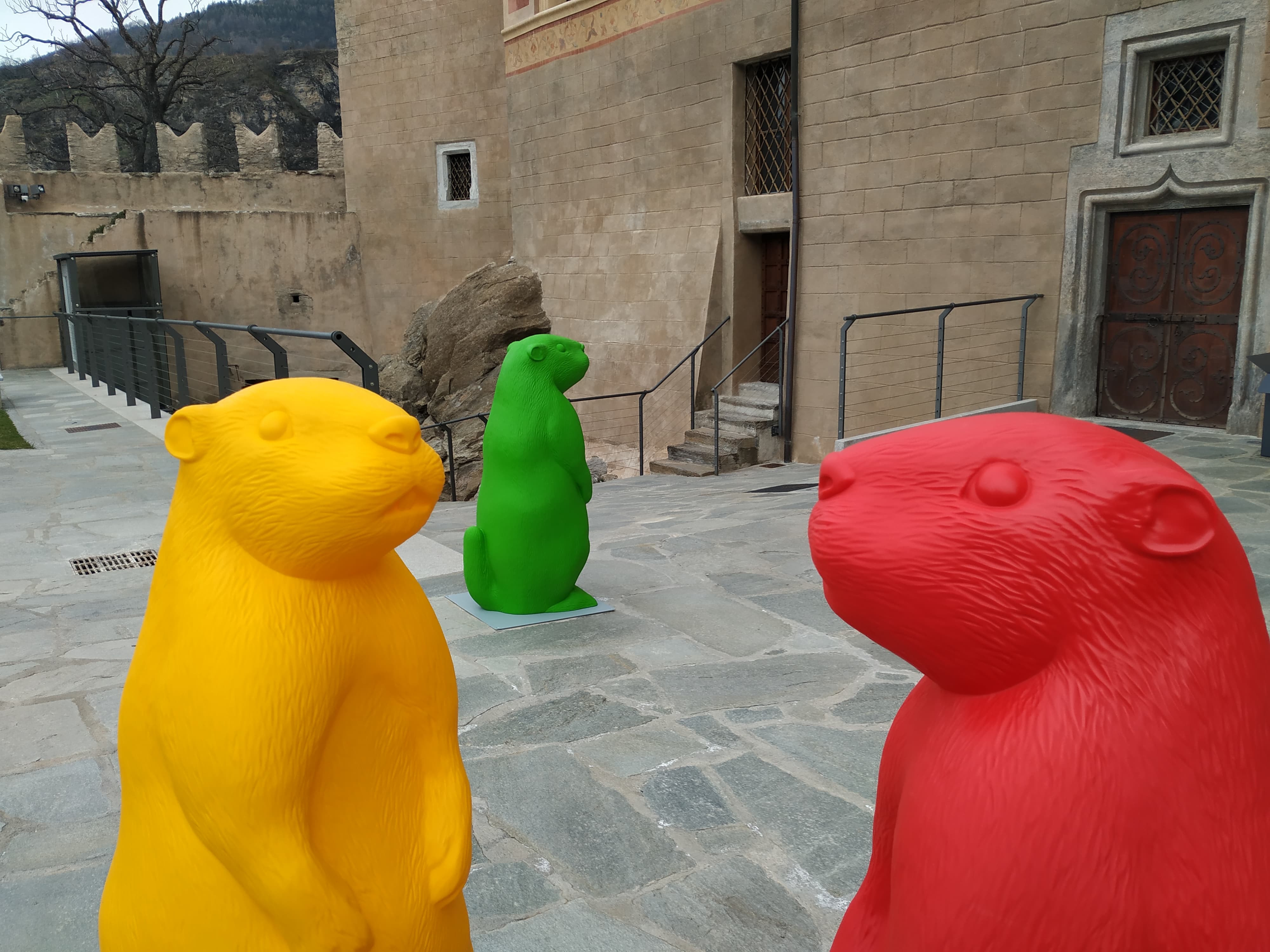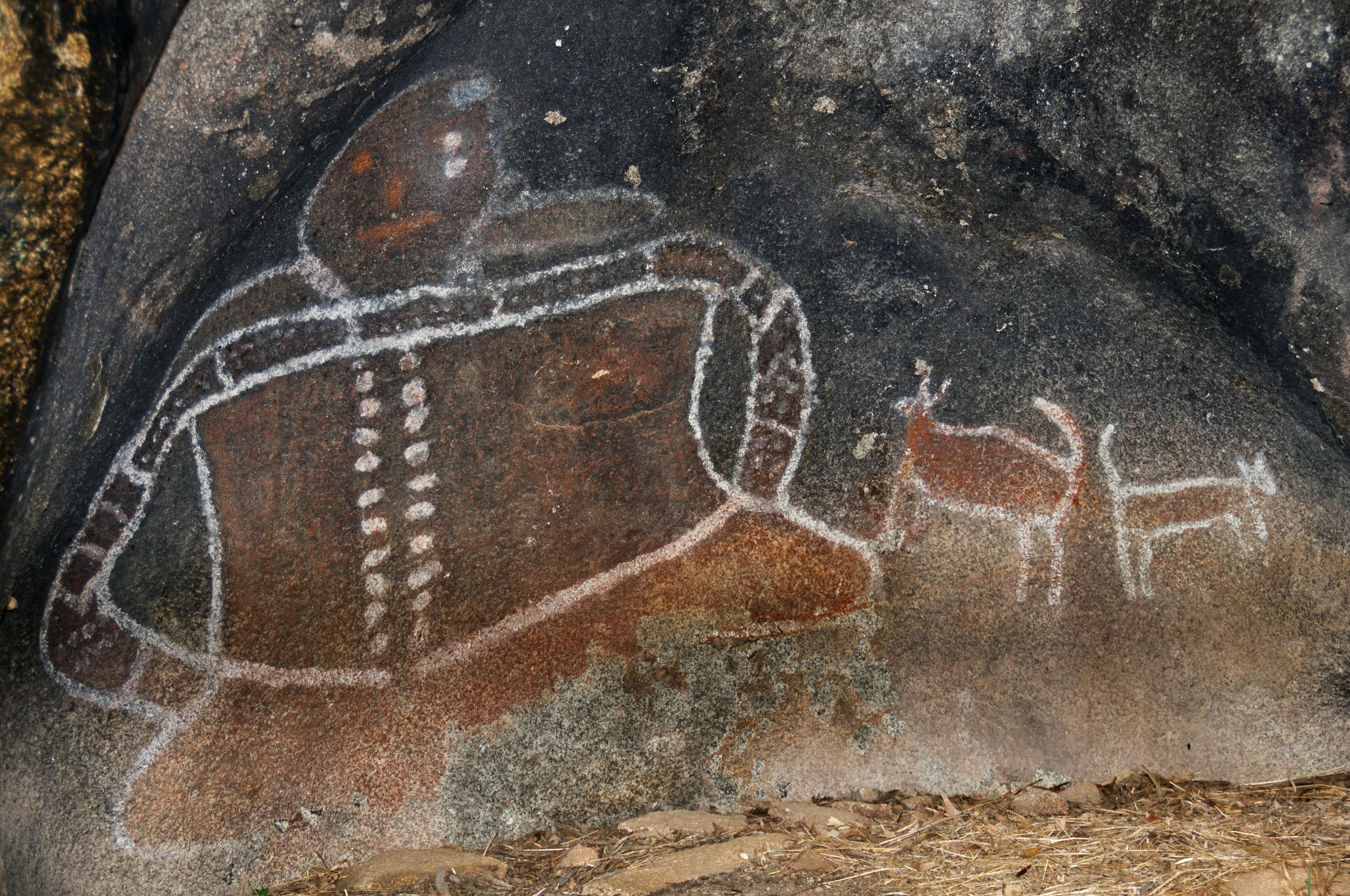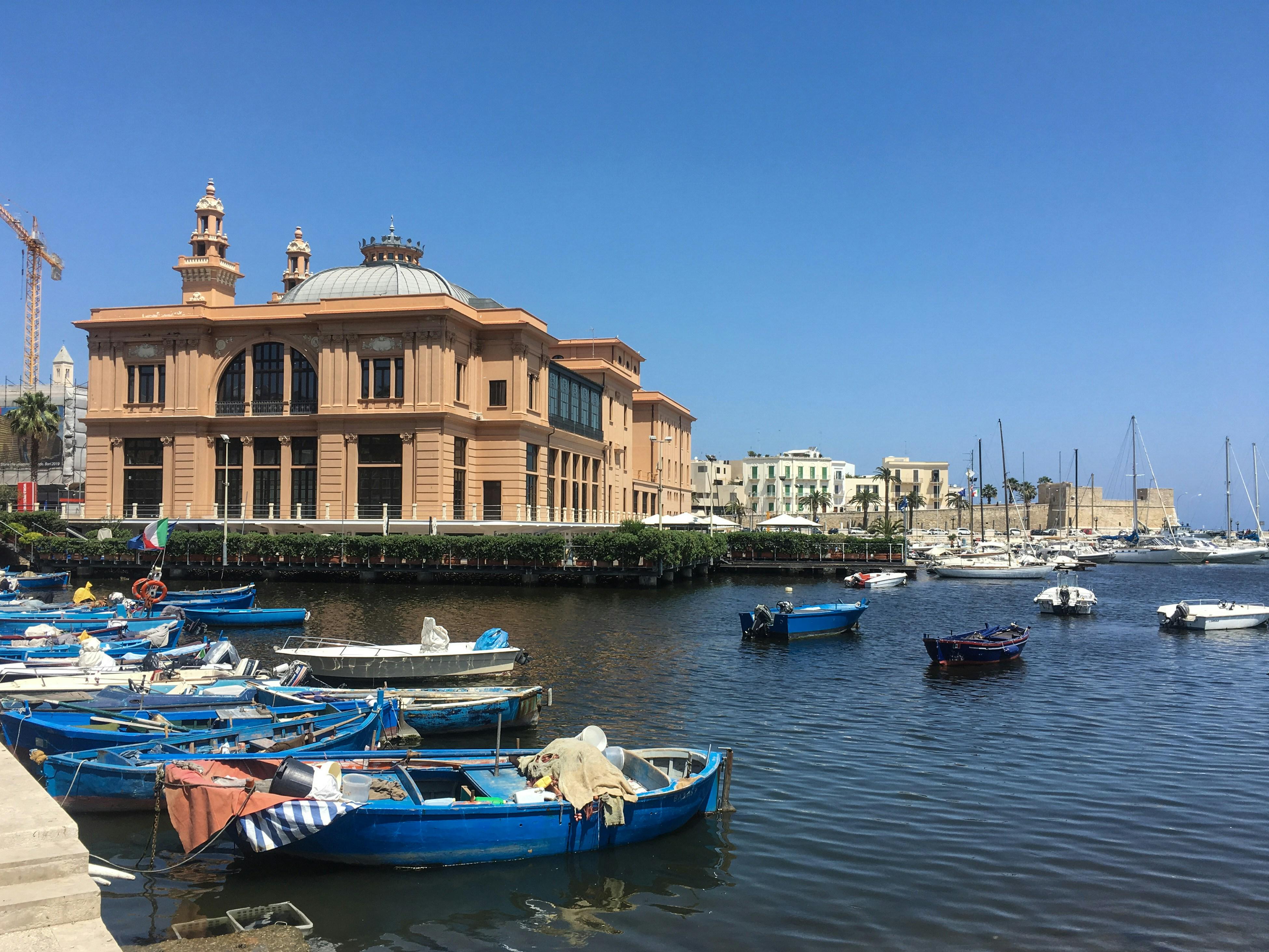The discovery and retrieval of the marmot mummy
After almost two years of research and study, as of 14 June it is possible to view the Lyskamm Marmot. This unique and extraordinary specimen will be exhibited to the public in a display case specially designed to ensure its conservation.
Let’s go back over the stages of discovering this mummy and how it was saved.
The small marmot mummy was discovered by chance in August 2022 by a mountain guide on the east face of the Lyskamm, a glacier in the Monte Rosa range that is located in the Gressoney-La-Trinité municipality at an altitude of 4,291 metres above sea level.
The mountain guide Corrado Gaspard discovered this extremely unusual find in its appearance and preservation while travelling an alternate path due to a holdup on the regular route. The small marmot was huddled on its left side, curled up on a rock as though it was trying to warm itself or defend itself. The guide informed the proper authorities of finding the marmot as soon as he realised it might be unique.
How did the news of the discovery reach you and what steps did you take to retrieve the marmot? Can you tell us about the key facts of that day?
Santa Tutino, Regional Manager and Director of the Museum
The retrieval of the marmot mummy was promoted by the Regional Administration, through the Department of Biodiversity, Sustainability and Protected Natural Areas. Operations for collecting the mummy were made possible by the President of the Region who, instantly appreciating the potential scientific value of the find, authorised the use of the Civil Protection’s helicopter.
Discussions were held with the relevant sections of the Civil Protection Department and with the Fire Brigade, and the flight was organised. The team was made up of the mountain guide who made the discovery and Velca Botti, the museum biologist. The collaboration with the EURAC Research Institute for the Study of Mummies in Bolzano also made it possible to define the protocol for recovery and conservation.
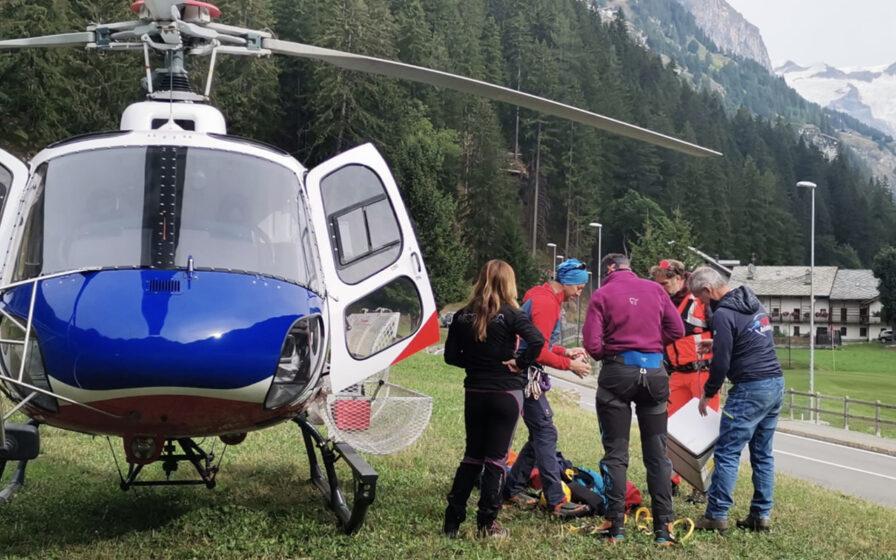
When did EURAC become involved? Had the Bolzano researchers already guessed the potential of the discovery from the photos and its geographical location?
Santa Tutino: the EURAC researchers were involved right from the start, helping to define the recovery procedures and subsequently ensuring the conservation of the artefact once placed in the Museum’s laboratories.
The support of the Institute for the Study of Mummies was fundamental for the Museum, given their experience in the study and conservation of naturally conserved mummies.
Initially no one imagined just how scientifically important the specimen is and it was thanks to the scientific approach together with EURAC that the first data, including radiocarbon dating, were obtained, which also justified the start of the multidisciplinary research The Marmot Mummy Project.
At the time of the discovery, the most significant fact was the presence of a marmot at that altitude. Of course, no one could have imagined for how long it had been in that place.
How did the retrieval go? What precautions were taken?
Velca Botti: biologist and researcher at the Valle d’Aosta Regional Museum of Natural Sciences
It all took place without any unanticipated problems or hiccups on the morning of 14 August in about 4½ hours. A helicopter flight from Courmayeur to Gressoney-La Trinité and back was followed by a car journey to the operational headquarters of La Salle Museum for the inspection of the mummy and its conservation in the laboratories.
It proved easy to remove the mummy from the rock on which it lay and good weather conditions enabled the work to be done unimpeded despite the altitude of 4300 metres. The marmot reached the laboratory perfectly intact and in the timeframe planned for inspection and conservation.
The material necessary and the retrieval stages were decided on in advance in the laboratory, before using the helicopter.
The correct scientific approach was not so simple to define in such a short time, given the complexity of the operation, the extraordinary nature of the find, the start of a new collaboration with EURAC and the preparation of the necessary material, including that for documentation.
It all took place without any problems or unexpected events on the morning of 14 August.
The sampling and storage protocol was drawn up in collaboration with EURAC.
Specifically, it was decided to take a sample in as sterile an environment as possible, monitoring temperature and humidity, transporting the mummy in refrigerated conditions, taking sediment samples from the discovery site, and carrying out an initial inspection in the laboratory, deciding not to freeze the marmot.
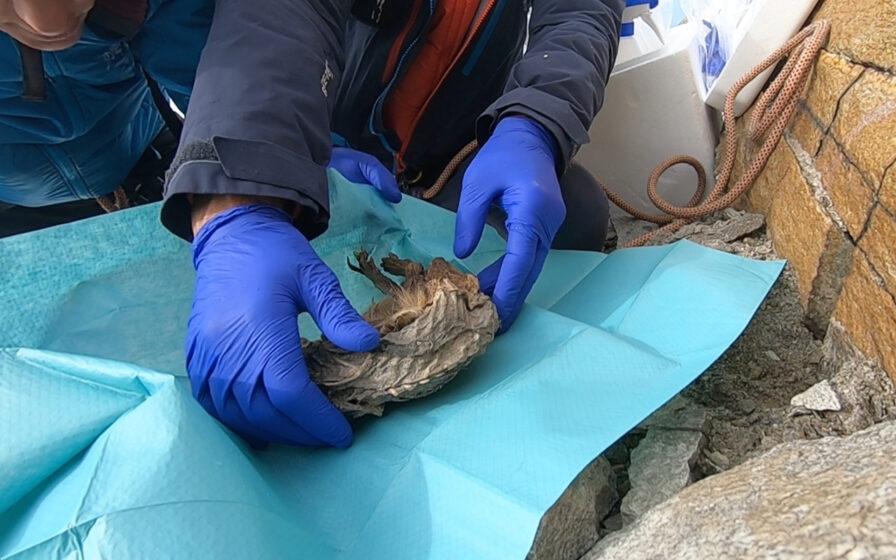
Is it possible to determine how long the Marmot had been exposed and where it may have originally been located?
Velca Botti: with the current set of data available to the Montagna Sicura Foundation, the first emergence could be dated to 2016, however more historical data is necessary to confirm this first hypothesis.
What were your feelings about this discovery, both personally and as a researcher?
Velca Botti: I was very curious and excited about this discovery on hearing about the small, mummified marmot, and I dropped everything else I was doing to take part in the operations for its retrieval. There was a general scepticism and caution about the discovery, but this didn’t dampen my enthusiasm. I immediately felt that it could be an opportunity for study and scientific research for the Museum, regardless of the value of the find, given the importance of examining the many artefacts that have emerged from the ice in recent years in the Aosta Valley.
On Saturday 14 August, after the mummy’s retrieval by helicopter, I had time to calmly examine the marmot in the silence of the laboratory. The little marmot in my hands was incredibly well preserved, beyond all expectations, with its tissues and fur still intact. The foetal position it was in, as if sleeping, gave the impression of life frozen still in that moment. The feeling of tenderness induced by that small body cannot be captured even by today’s photography.
What can scientific research into this discovery tell us?
Velca Botti: the discovery of a 6,600-year-old naturally conserved mummy, whose age has been confirmed by radiocarbon analysis on 3 ribs, gives it the clear scientific-cultural value of the possibility of carrying out scientific investigations in various fields.
In this regard, a working group was established involving archaeologists, biologists, geneticists, glaciologists, natural historians and veterinarians, and The Marmot Mummy Project was launched to implement a multidisciplinary study on the mummy and on the context of its discovery.
We can therefore investigate the morphology of the mummy to hypothesise its age, sex and causes of death, study the genetic aspects including those of the environment where it was discovered, gain greater geological knowledge especially as relates to Monte Rosa and the dynamics of the glaciers in relation to climate change, and intersect the archaeological and historical knowledge of the Aosta Valley with that of the era in which the marmot lived.
What does this discovery represent for the Natural Sciences Museum?
Santa Tutino:the mummy has an important archaeological, historical and cultural significance for the entire Aosta Valley as its dating puts it in the same period as the megalithic area of Saint-Martin-de-Corléans and the Vollein necropolis, and is therefore a further part of the history of our region.
From a scientific perspective, a naturally occurring mummy has never been found in Valle d’Aosta before, and this is a unique event that opens the way to numerous scientific research opportunities. Given the effects of climate change on glaciers and their melting, new discoveries and finds are likely to come to light.
The marmot mummy may therefore not be the only discovery to emerge and this will enable the start of new lines of research, opportunities for collaboration and the acquisition of further skills.
Lastly, from a museum point of view, it will be possible to create new promotional, dissemination and educational activities that will allow the Museum to strengthen its relationship with the territory and consolidate its role as a research and dissemination body serving the community.
The images are owned by the Efisio Noussan Museum of Natural Sciences courtesy of Velca Botti

Santa Tutino Museum director - Efisio Noussan Regional Museum of Natural Sciences
Biologist and an executive with the Autonomous Region of Valle d’Aosta, she deals with nature conservation, protected natural areas and sustainability. Director of the Efisio Noussan Regional Museum of Natural Sciences and head of the biotechnology laboratory, she coordinated the project for restoring and reorganising the Museum in Saint-Pierre Castle. She is in charge of managing and promoting sustainable tourism in the regional protected natural areas.

Velca Botti Researcher - Autonomous Region of Valle d’Aosta
She has been a researcher at the Museum of Natural Sciences since 2013 and has a degree in medical, pharmaceutical and veterinary biotechnology from the University of Pavia. As part of the VDNA BarcodingResearch Unit she set up the first biotech lab in Valle d'Aosta equipped with a DNA sequencer. She performs genetic analyses in the fields of nature and biodiversity, agrifood and conservation of cultural heritage, planning, scientific dissemination and is the author of publications.
